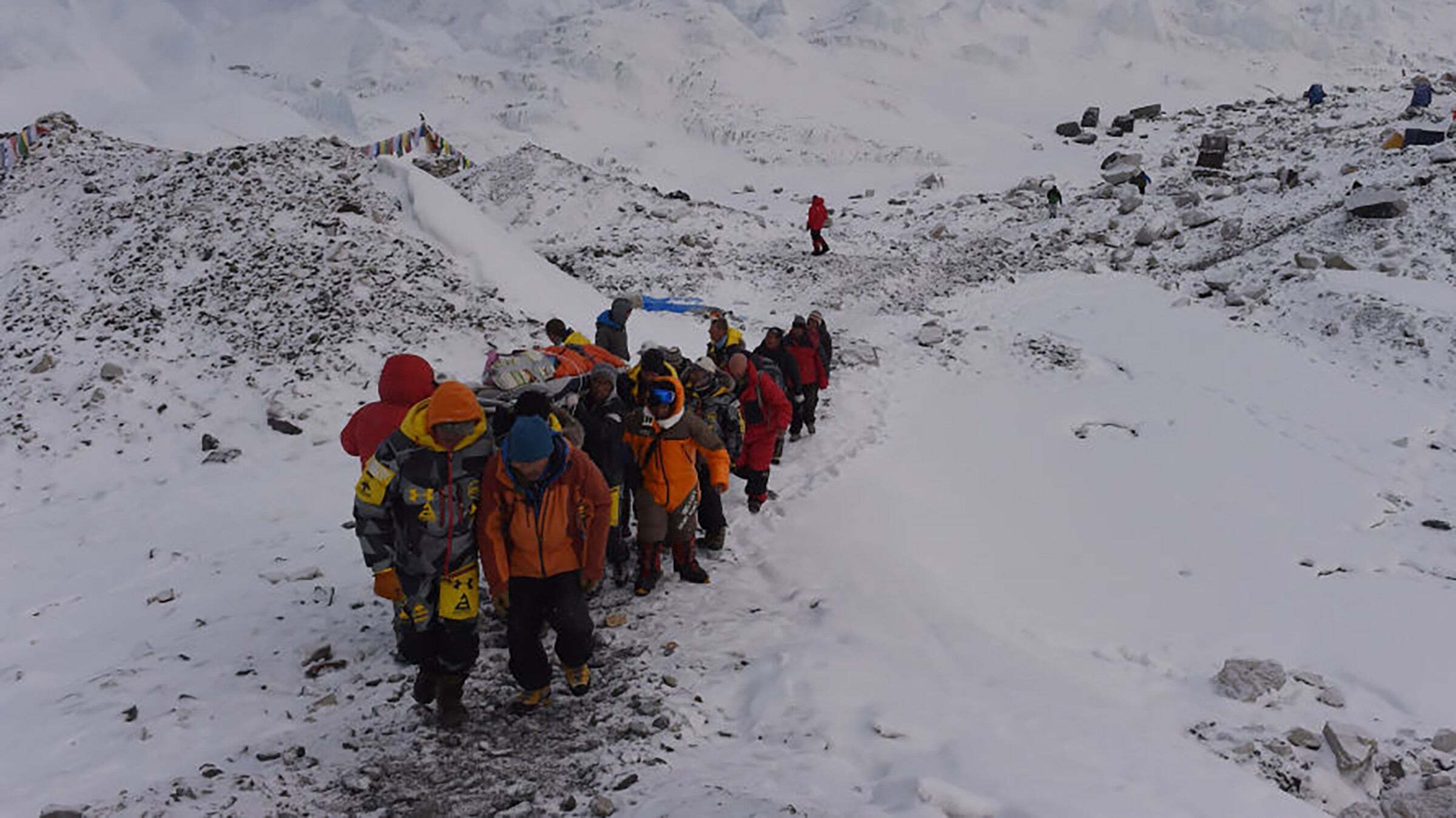
Mount Everest, the world's tallest peak, holds many secrets, including the eerie presence of climbers who never made it back. Why are there so many bodies on Mount Everest? The answer lies in the mountain's extreme conditions. High altitude, severe weather, and treacherous terrain make recovery missions nearly impossible. Many climbers succumb to altitude sickness, frostbite, or exhaustion. Once they perish, their bodies often remain as grim markers for future adventurers. The cost and risk of retrieving these remains are immense, leading to a haunting landscape where the fallen rest eternally. This article delves into 28 chilling facts about these silent sentinels.
Key Takeaways:
- Mount Everest is a challenging and dangerous place, with over 300 people perishing on the mountain. The extreme conditions make recovering bodies nearly impossible, creating a haunting and risky environment for climbers.
- The presence of bodies on Mount Everest raises environmental and psychological concerns. It's a reminder of the mountain's dangers and the human spirit's determination, sparking debates about climbing ethics and responsibility.
The Grim Reality of Mount Everest
Mount Everest, the highest peak on Earth, attracts adventurers from around the globe. However, the mountain's allure comes with a dark side. Many climbers have perished in their quest to reach the summit, leaving behind a trail of bodies. Here are some chilling facts about the bodies on Mount Everest.
-
Over 300 people have died on Mount Everest since the first recorded deaths in 1922.
-
The bodies of climbers who die on Everest often remain on the mountain due to the extreme conditions and difficulty of recovery.
-
The "Death Zone" above 8,000 meters is where most fatalities occur, as the lack of oxygen and harsh weather make survival incredibly challenging.
-
Some bodies have been on Everest for decades, preserved by the cold temperatures and dry conditions.
-
"Green Boots" is one of the most famous bodies on Everest, named after the neon green boots the climber was wearing when he died in 1996.
The Challenges of Recovery
Recovering bodies from Mount Everest is a daunting task. The extreme altitude, unpredictable weather, and treacherous terrain make it nearly impossible to bring down the deceased.
-
It can cost up to $70,000 to recover a body from Everest, making it financially prohibitive for many families.
-
Sherpas, the local guides who assist climbers, often risk their own lives to recover bodies, adding to the danger.
-
Some bodies are used as landmarks by climbers, serving as grim reminders of the mountain's dangers.
-
The weight of a body, combined with the lack of oxygen, makes it incredibly difficult for rescuers to carry them down.
-
In some cases, bodies are moved to safer locations on the mountain to prevent them from being a hazard to other climbers.
The Environmental Impact
The presence of bodies on Mount Everest has raised concerns about the environmental impact on the mountain.
-
Decomposing bodies can contaminate the snow and ice, affecting the water supply for local communities.
-
The increasing number of climbers has led to more deaths, exacerbating the problem of bodies on the mountain.
-
Efforts to clean up Everest have included the removal of bodies, but the process is slow and dangerous.
-
Some climbers choose to be cremated on the mountain to reduce the environmental impact of their remains.
-
The presence of bodies has sparked debates about the ethics of climbing Everest and the responsibility of climbers to the environment.
The Psychological Toll
The sight of bodies on Mount Everest can have a profound psychological impact on climbers.
-
Seeing a body can be a stark reminder of the dangers of climbing, causing fear and anxiety.
-
Some climbers have reported experiencing nightmares and PTSD after encountering bodies on the mountain.
-
The knowledge that bodies are left behind can weigh heavily on climbers, adding to the mental strain of the ascent.
-
The decision to leave a body behind can be a difficult and emotional one for climbers and their families.
-
The presence of bodies can create a sense of camaraderie among climbers, as they are reminded of the shared risks and challenges.
The Stories Behind the Bodies
Each body on Mount Everest has a story, often one of ambition, bravery, and tragedy.
-
George Mallory, one of the first climbers to attempt Everest, disappeared in 1924. His body was found in 1999, still wearing his climbing gear.
-
Francys Arsentiev, known as "Sleeping Beauty," died in 1998 after reaching the summit without supplemental oxygen. Her body remained on the mountain for nine years.
-
David Sharp, who died in 2006, sparked controversy when other climbers passed by him without offering assistance.
-
Hannelore Schmatz, the first woman to die on Everest, perished in 1979. Her body remained visible for years before being blown off the mountain.
-
Tsewang Samanla, Dorje Morup, and Tsewang Paljor, members of the ill-fated 1996 Indo-Tibetan Border Police expedition, all died in the same storm that claimed "Green Boots."
The Future of Everest
As climbing Everest becomes more popular, the issue of bodies on the mountain will continue to be a challenge.
-
Advances in technology and climbing techniques may make it easier to recover bodies in the future.
-
Increased awareness of the risks and responsibilities of climbing Everest could lead to better safety measures and fewer deaths.
-
The legacy of those who have died on Everest serves as a reminder of the mountain's power and the human spirit's determination to conquer it.
The Final Resting Place
Mount Everest, with its towering peaks and treacherous paths, holds many secrets. Over 300 climbers have lost their lives on this formidable mountain. Many bodies remain on Everest, frozen in time, serving as somber reminders of the mountain's dangers. These bodies, often used as waypoints, highlight the extreme conditions climbers face. The high altitude, freezing temperatures, and unpredictable weather make recovery efforts nearly impossible. Despite these risks, adventurers continue to challenge themselves, drawn by the allure of standing atop the world's highest peak. Everest's icy slopes tell stories of bravery, determination, and sometimes, tragedy. Understanding these facts about the bodies on Mount Everest offers a deeper appreciation for the mountain's history and the climbers who dare to conquer it. As we reflect on these tales, we honor those who made the ultimate sacrifice in their pursuit of adventure.
Frequently Asked Questions
Was this page helpful?
Our commitment to delivering trustworthy and engaging content is at the heart of what we do. Each fact on our site is contributed by real users like you, bringing a wealth of diverse insights and information. To ensure the highest standards of accuracy and reliability, our dedicated editors meticulously review each submission. This process guarantees that the facts we share are not only fascinating but also credible. Trust in our commitment to quality and authenticity as you explore and learn with us.


